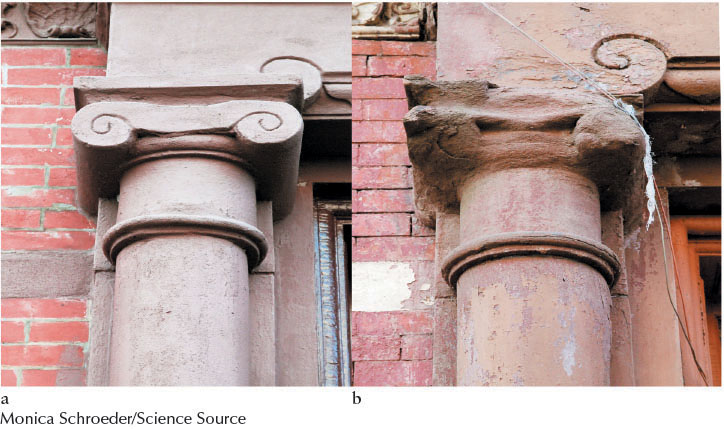369
CHAPTER [strong]12[/strong]

The Lives of Stars from Birth Through Middle Age
WHAT DO YOU THINK?
 How do stars form?
How do stars form?
 Are stars still forming today? If so, where?
Are stars still forming today? If so, where?
 Do more massive stars shine longer than less massive ones? What is your reasoning?
Do more massive stars shine longer than less massive ones? What is your reasoning?
 When stars like the Sun stop fusing hydrogen into helium in their cores, do the stars get smaller or larger?
When stars like the Sun stop fusing hydrogen into helium in their cores, do the stars get smaller or larger?
Answers to these questions appear in the text beside the corresponding numbers in the margins and at the end of the chapter.
370
Time changes everything. We grow up, we grow older, and we die. We are most familiar with changes brought about by aging in our own lives and the lives of other people, but everything else in the universe also alters with time. These changes are due to the forces in nature that cause interactions between matter and energy. For example, over time, exposure to the effects of weather and pollution causes even solid stone to crumble (Figure 12-1).

Gravity provides the energy that enables stars to shine. As we saw in studying the Sun (Chapter 10), gravity compresses stars, thereby heating them and causing fusion to occur. As a result, stars emit huge amounts of radiation. Over time, their chemical compositions, masses, and brightnesses all vary—stars age. Major stages in the life of each star can last from days to hundreds of billions of years. Cumulative lifetimes of stars range from millions to hundreds of billions of years. We will explore their evolution in this and the next chapter.
In this chapter you will discover
 how stars form
how stars form
 what a stellar “nursery” looks like
what a stellar “nursery” looks like
 how astronomers use the physical properties of stars to learn about stellar evolution
how astronomers use the physical properties of stars to learn about stellar evolution
 the remarkable transformations of older stars into giants
the remarkable transformations of older stars into giants
 how the Hertzsprung-Russell (H-R) diagram is your guide to the stellar life cycle
how the Hertzsprung-Russell (H-R) diagram is your guide to the stellar life cycle
 how pairs of orbiting stars can change each other
how pairs of orbiting stars can change each other
Insight Into Science: Beware Poetic License
All too often, the names and descriptions we use for nonliving objects seem to give them human qualities. Anthropomorphism—assigning human attributes to nonhuman creatures or even to nonliving objects, like stars—is descriptive but not scientific. In fact, scientists avoid this practice where possible, because it creates unjustified expectations. Nevertheless, anthropomorphism does creep into astronomy. For lack of better terms, astronomers describe stellar change with words related to living things, such as life, life cycle, evolution, birth, aging, maturing, growing old, and dying. This is poetic license of a sort: It piques our interest but muddles our science. As you study stellar evolution, always be mindful of that.